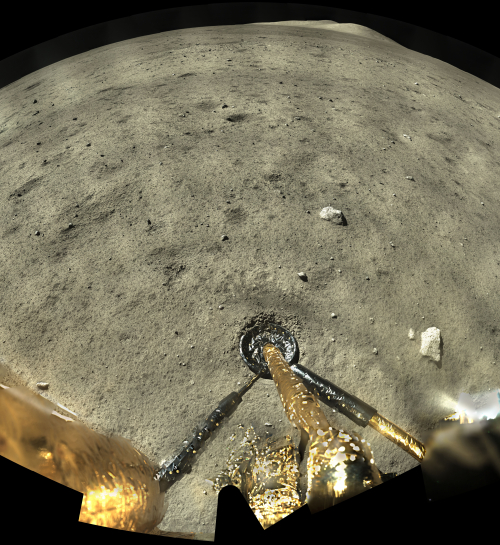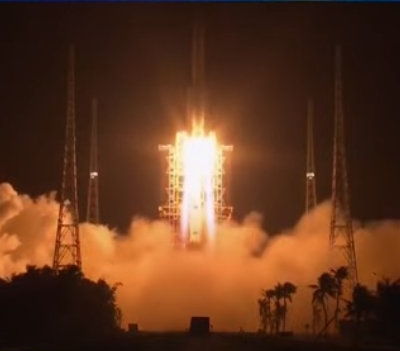Arizona legislative Republican leaders call for election audit of Maricopa County
The Republican leaders of the Arizona state senate and house today called for an audit of the Maricopa County Dominion software and equipment used during election day.
This is a major change of position, as these leaders have until now resisted such action. Maybe their change of heart is because of the evidence revealed at an improvised hearing earlier this week, as well as the problems found with a random selection of only 100 ballots. Or maybe it was this:
Arizona Rep. Mark Finchem on Friday called on his fellow lawmakers to come together and recall Arizona’s certification.
Finchem said county clerks are now coming forward and admitting something is off with the canvassing and the numbers are just not adding up. “We got people coming out of the woodwork,” Finchem said adding that the legislature will just go around Governor Ducey.
“We only need to have 31 members of the House and 16 members of the Senate pass a resolution recalling our electors. It’s that simple,” he said. “Our constituents are blowing up over this.” [emphasis mine]
The Constitution in the matter of choosing the President is very clear: It is the job of the state legislatures, not the voters, not the governors, not the courts, and most especially not unelected officials in election boards. For decades these state legislatures have allowed the popular vote determine the choice, because everyone trusted the counting process. It appears no one does anymore, and when that happens, the state legislatures need to do their job.
The goal should be to determine if the vote is valid, or not. If valid, than Joe Biden won. Period. Congratulations to the Democrats, though I doubt anyone will end up celebrating their rule in the end. Their policy choices and their eager willingness to blackball and persecute their opposition will not bode well for the future.
If not valid, however, the legislature has several choices. They can call for a revote. They can choose the president themselves, picking electors that will reflect that choice. Or they can refuse to certify at all, sending the decision to the federal House of Representatives.
The state legislature has an additional responsibility, irrelevant of the presidential election. They must institute major changes that will prevent such problems ever again.
Finally, kudos must go to my own representative, Mark Finchem, for pushing this hard, and finally getting some results. The battle is not won, but at least the enemy is finally retreating slightly.
The Republican leaders of the Arizona state senate and house today called for an audit of the Maricopa County Dominion software and equipment used during election day.
This is a major change of position, as these leaders have until now resisted such action. Maybe their change of heart is because of the evidence revealed at an improvised hearing earlier this week, as well as the problems found with a random selection of only 100 ballots. Or maybe it was this:
Arizona Rep. Mark Finchem on Friday called on his fellow lawmakers to come together and recall Arizona’s certification.
Finchem said county clerks are now coming forward and admitting something is off with the canvassing and the numbers are just not adding up. “We got people coming out of the woodwork,” Finchem said adding that the legislature will just go around Governor Ducey.
“We only need to have 31 members of the House and 16 members of the Senate pass a resolution recalling our electors. It’s that simple,” he said. “Our constituents are blowing up over this.” [emphasis mine]
The Constitution in the matter of choosing the President is very clear: It is the job of the state legislatures, not the voters, not the governors, not the courts, and most especially not unelected officials in election boards. For decades these state legislatures have allowed the popular vote determine the choice, because everyone trusted the counting process. It appears no one does anymore, and when that happens, the state legislatures need to do their job.
The goal should be to determine if the vote is valid, or not. If valid, than Joe Biden won. Period. Congratulations to the Democrats, though I doubt anyone will end up celebrating their rule in the end. Their policy choices and their eager willingness to blackball and persecute their opposition will not bode well for the future.
If not valid, however, the legislature has several choices. They can call for a revote. They can choose the president themselves, picking electors that will reflect that choice. Or they can refuse to certify at all, sending the decision to the federal House of Representatives.
The state legislature has an additional responsibility, irrelevant of the presidential election. They must institute major changes that will prevent such problems ever again.
Finally, kudos must go to my own representative, Mark Finchem, for pushing this hard, and finally getting some results. The battle is not won, but at least the enemy is finally retreating slightly.






